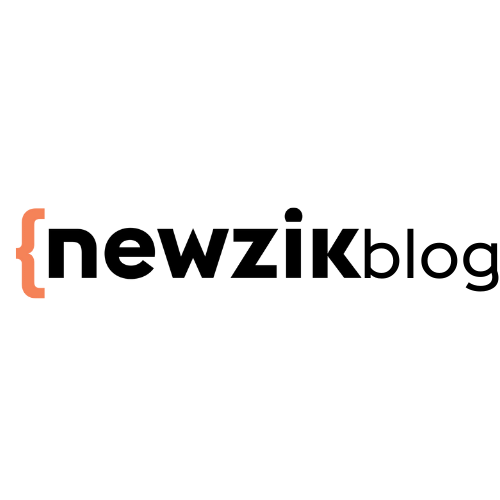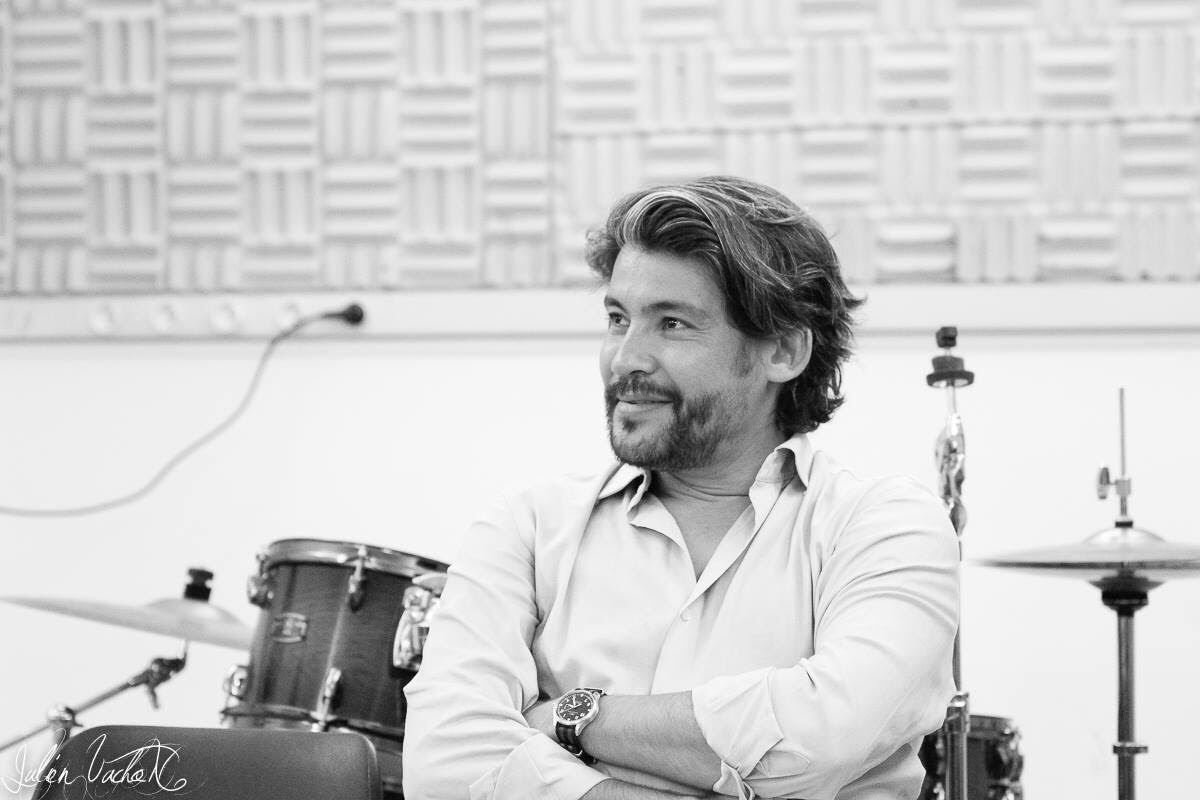Stéphan Gaubert, conductor at the Victoires de la Musique awards
Portrait interview with Stéphan Gaubert, orchestra director at the Victoires de la Musique awards and artistic director of the Rachmaninov Conservatory in Paris.
Stéphan Gaubert is a renowned conductor of the orchestral ensemble for France Télévisions' Victoires de la Musique, and has also taken part in the recording of other famous music TV shows, such as La Nouvelle Star and Danse avec Les Stars. A fixture of the French music media, Stéphan Gaubert is currently artistic director and vice-president of the Rachmaninov Conservatory in Paris. Orchestration and setting up an orchestra according to Stéphan Gaubert: zoom in on the job of arranger and conductor.
What made you decide to become a conductor?
I myself come from a family of musicians. My father is an orchestrator* and conductor. So for me, as a child, music was just like school. In the end, it came quite quickly.
*Editor's note: an orchestrator is responsible for transcribing and shaping an orchestra's idea of harmony. The orchestrator often goes back and forth with the composers, in order to adapt to the original composition.
Were you inspired by any particular composers?
Yes, like many musicians. After that, it depends on how you study the styles. When you enter the Paris Conservatoire, first of all, you learn to harmonize or write. Then, you learn to write in the style of the composers. I, for example, passed my exam in the style of Ravel and Mozart. You're taught to imitate. As Ravel used to say, "Imitate! If you have talent, it will come out! To compose, you need to master the widest possible range of musical language.
At what age did you first play an instrument?
I don't even remember it. When I was a child, my father gave me lessons. When I started playing my first notes on the piano, he'd put three colors on the keys. I'd say it was around six or seven years old, in those waters.
How would you describe a day spent preparing for the Victoires de la Musique recording session?
Les Victoires de la Musique is one of the programs that is fortunate enough to have the means to fulfill its ambitions, which is becoming increasingly rare. Because we have the opportunity to have two days of orchestra rehearsals where we only deal with the music. After that, we're with the artists on stage from Tuesday, Wednesday, Thursday and Friday. For three days, we rehearse with the musicians and then we do a spin on Friday with the live show in the evening, which no longer exists at all. With everyone trying to squeeze as much as possible from their budgets to be as profitable as possible, we often end up having fewer rehearsals. Les Victoires is a program that offers more possibilities and greater ambition in terms of creation.
During the Victoires de la Musique, you can have fun with the songs like nowhere else, because there's a real sense of freedom. That's another advantage of this show: it's the biggest music show on the French audiovisual scene, so we don't skimp on resources. On top of that, there's a real quest for quality that you don't necessarily find on other shows.
The Victoires de la Musique are also there to encourage discovery. Christine And The Queens, for example, was able to explode thanks to this program, as was Clara Luciani, who revealed herself to some extent at the Victoires. There are many, many, many artists who are lucky enough to be revealed thanks to this program, because in the end, it's the only show that rewards artists, and these artists are rewarded by the profession. It's not voting by the public: it's the professionals who vote.
On an orchestral recording of this type, how many instruments are involved?
I have a total of some thirty musicians, comprising several instruments: guitar, bass, drums and two keyboards. I also have rhythm section, first section, second section, violas and cellos, a string orchestra and a brass section.
And personally, how many instruments do you master professionally?
You're not the first to ask me this question. The important thing, when approaching orchestration, is not the actual technique of playing an instrument. It's about knowing its intensity and volume, and knowing that in such and such a tessitura, such and such an instrument, there may be difficulties in terms of agility, but also in terms of its volume in relation to the others. For example, if you write a flute in the low register that plays a really important movement, and you play around with trumpets and trombones in the same range, you've no chance of hearing your flute in the low register. Knowing how to orchestrate means knowing the natural balances of the orchestra. What's more, the flute's velocity and agility bear no comparison with those of the trombone.
What makes a good orchestrator?
You have to start by observing what our masters did to have any chance of understanding what an orchestra is. It's not enough to program into a computer and then just have the musicians play. You'll get a false picture of the acoustic reality of the instruments and, above all, you won't have a proper understanding of how the instruments are written and how they can be used in this or that context.
There are several relationships to consider when you have an orchestration to create. First of all, there's the relationship to time ( rythm), the relationship to the melodic element in the foreground, and the relationship to the background (harmony). And what we often forget is this relationship. In other words, what's going to create the setting around all this and accompany it. From there, you may be lucky enough to have an interesting orchestral readability.
As an orchestrator, do you have any technical tips for adapting to all the instruments in an orchestra?
Of course it was. I had a teacher, Pierre Jansen, a composer who created the music for all Chabrol's films, who explained to us that orchestration wasn't a science, but a skill. And it's true, it's through experience and reading works that you begin to glimpse the possibilities of the orchestra.
What's important is to take the time to read orchestral scores: orchestrations by our contemporaries John Williams or John Corigliano in contemporary music, but also more classical composers like Mozart or Beethoven.
I'd say that in terms of orchestration, you'd have to start with Mozart and work your way up to the present day. The idea is to have a range of different colors and to know how to use them to good effect in your work.
Music is a bit like painting: the initial drawing will take on its true dimension once you have a knowledge of the whole architecture of a painting. By taking a global approach to all painting techniques, you give yourself a small chance of making something that makes sense.
How did you discover the Newzik application?
I discovered Newzik through a friend, Loïc Pontieux, who is a drummer and played on Véronique Sanson's tours. Loïc told me: "There's a great application. What's more, it's a French start-up." So I made an appointment with them. At the time, we were doing Nouvelle Star, which was about ten years ago. It was the first time we'd used iPads. Imagine: ten years ago, doing an entire live show with all our sheet music on iPads! Back then, everyone was scared.
They were the first big iPads on which you could actually play music. And so, we wiped the slate clean together. They came because it taught them a lot about the way we work, and I thought it was great. There are several reasons for this. As you know, we use a lot of paper. For each show, we'll make scores for everyone and then throw it all in the garbage can.
Have you noticed any changes in your musical practice thanks to the application?
I've seen real changes. Take the example of a singer who falls ill and whose tonality has changed. With Newzik, the big advantage is that you can transpose your tonality in real time. That's a big plus.
We can take what we call the American cipher and transpose it to more than half atone. This saves an incredible amount of time, and even more so now that all our scores are directly into software. So, when I'm about to do a transposition, if I have certain notes, using external notation software, I can change them and I immediately extract the PDFs to share them directly with the orchestra . This way, each musician receives them in real time in his or her Newzik application.
No need to print out everything! In the event of a small change to tonality or notes, you can directly retrieve your layer with your annotations and bow strokes and apply them to your scores.
Do you ever annotate your scores while recording a program?
Often, when I'm in an orchestra, I'm very busy. And if the singer is there, he has to be taken care of. My copyist will take care of that, so that I can get on with my work, and he'll do a new export for me. He sends me the location where everything has been exported via a tool like Dropbox. I save the scores in the Newzik application and then share the documents directly by airdrop with the whole orchestra. Without Newzik, you'd have to copy by hand from the beginning. With the application, you get your layer in one click and apply it to the new score.
There's also the practical aspect of saving time when turning the page of a score with the pedal.
What's your favorite Newzik feature?
Without hesitation, transposition. For me, Newzik's main strength lies in its ability to switch to XML and have your grid transposed right away, so that you can immediately play with the singer, even if you have to clean up afterwards.
Generally speaking, everything is done in a hurry: Newzik's strength lies in its ability to make changes and transpositions to scores in no time at all.
Was there a special moment during your Victoires de la Musique recordings?
What stands out for us are not the technical memories, but above all the artistic moments. I remember, for example, the performance by revelation artist November Ultra. She was so moved, she shed a tear. That kind of thing calms the whole orchestra. There was a real emotion that took place during the rehearsal.
Any last words about your use of Newzik?
Yes, there is one very important thing. It's funny, but when I started using Newzik 10 years ago, I didn't need glasses. The fact that we can zoom in on a score at will, in detail, and see a layout quickly by group, is a real advantage over paper.
You don't have to have the detail when you're directing. But when you do come across a typo, the advantage is that you can see it fairly quickly by enlarging it on the screen, rather than bending over the sheet.
🎼 Do you dream of annotating your digital scores from any device? It's now possible with Newzik Web ! A new set of annotation tools that lets you annotate scores with text, symbols and drawings.

